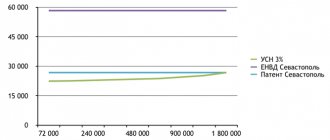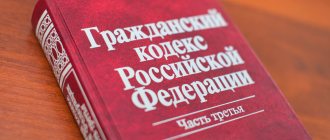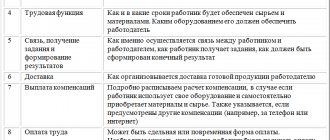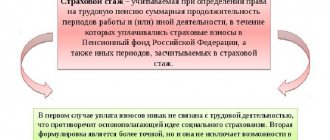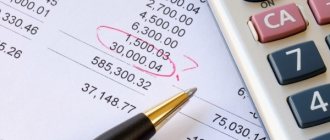Value added tax is an indirect type of fee. VAT in Russia is levied at every level of production, during its sale, performance of work and provision of services, i.e. for almost any type of activity. Payment of tax is mandatory, and it itself is usually included in the cost of a product or service. The legislation also provides for the work of individual entrepreneurs with VAT, but in some cases entrepreneurs are exempt from this tax.
The essence of the tax
Let us give a clear formulation of the tax. VAT for the buyer is the amount that the seller adds to the price of the purchased goods. For the seller, this is a tax that he has to transfer to the budget. The tax is paid by each participant in the chain, from the manufacturer of the product to the company specializing in cargo transportation and delivering the product.
The following items are considered to be subject to VAT:
- Operations involving the sale of services, property rights, goods, and work in the Russian Federation.
- Transactions involving the transfer of work, goods, and services for one’s own needs.
- Operations for carrying out construction and installation work for your own needs.
- Operations for importing goods into the country from abroad.
The tax base is the markup calculated on the basis of contract prices and advances received. For imported goods, the basis for calculating VAT is the customs value according to the declaration.
Amounts submitted by suppliers when using purchased products or services in activities subject to this tax are considered as VAT deductions. This also includes capitalized services and products for which documentation is drawn up in the form of invoices.
Important! No deductions will be applied to invoices issued incorrectly.
If the tax calculation is negative, this is called “VAT refundable”. To credit such a refund, the entrepreneur will have to undergo a desk audit, based on the results of which VAT is allowed to be taken as an offset to future payments.
Does the individual entrepreneur pay VAT?
Individual entrepreneurs are subject to the obligation to pay this tax. This norm is enshrined in the Tax Code of the Russian Federation. But in practice, everything depends on what system of individual entrepreneur taxation with VAT is used by the businessman.
Several special tax regimes have been introduced for entrepreneurs. You can choose one of them at your own discretion, sometimes even a combination of several schemes is possible. When choosing, the convenience for the merchant himself is usually taken into account in terms of reporting and the size of the tax rate, as well as contacts with partners.
Important! For some counterparties, the application of VAT is a mandatory condition for doing business. This applies, for example, to large foreign companies.
To determine whether an individual entrepreneur is a VAT payer, it is enough to know the taxation scheme used by him. Payment of tax is not required when conducting activities under the following regimes:
- simplified tax system or the so-called simplified tax system.
- UTII is a system for calculating taxes according to a specific scheme. From 2021, you can switch to this scheme at your own discretion, but it only works for certain types of activities.
- Unified agricultural tax is a special regime for agricultural producers.
- The patent system is now separated into an independent regime and is valid for specific services.
Individual entrepreneurs who use OSNO in their work must pay VAT.
Individual entrepreneurs working under UTII can combine this regime with the general regime for different types of activities. In such cases, VAT is paid for that part of the activity that is subject to taxation under the general regime.
Under the simplified tax system, an entrepreneur does not have to pay VAT, as well as some other fees: on profit and property. But there are exceptions here. A simplified businessman is a VAT payer when he performs the functions of a tax agent.
The second case is issuing an invoice to the counterparty when this tax is highlighted in the document. This category does not include sales under intermediary agreements with domestic customers, when the individual entrepreneur is an agent or commission agent. An individual entrepreneur using the simplified tax system must include data from issued invoices in the declaration. If the intermediary entrepreneur is not a tax agent, he submits a journal of invoices to the tax authorities instead of a declaration.
There are also exceptions for UTII payers. In this mode, VAT will have to be paid when issuing invoices, performing the duties of a tax agent and importing goods into the Russian Federation.
As for the combination of UTII and OSNO, an important nuance must be taken into account. If an individual entrepreneur purchases services or products for use exclusively in activities on UTII, then the amount of VAT will be taken into account in the cost of these goods and works. If you plan to use them in activities on OSNO, the tax amount is deductible according to the current tax rules.
If it is impossible to ensure separate accounting, “input” VAT is distributed in proportion to the use of goods and services in activities in both modes. An example of such a situation would be paying utility bills and renting premises.
According to Article 9 of Law No. 335-FZ of November 27, 2017, from 2021 individual entrepreneurs on the Unified Agricultural Tax will become VAT payers. However, entrepreneurs in this regime are exempt from paying tax if certain conditions are met. The first concerns businessmen who switched to the Unified Agricultural Tax and declared an exemption from VAT within one calendar year. The second provides for receiving total income excluding tax within the limits:
- 100 million rub. in 2021
- 90 million rub. in 2021
- 80 million rub. in 2021
- 70 million rub. in 2021
- 60 million rub. in 2022 and subsequent years.
Individual entrepreneurs on the Unified Agricultural Tax, who have been exempted from VAT, will not be able to waive this right in the future. If an entrepreneur exceeds the above amount of income, from the same month he becomes obligated to pay VAT. You will not be able to receive the benefit again.
Important! Exemption from VAT is not provided to entrepreneurs who have sold excisable goods for 3 months in a row.
In the patent system, exceptional cases in which VAT is paid are the import of goods into the country, transactions under agreements of a simple or investment partnership, trust management, and concession agreements.
Individual entrepreneur with VAT and individual entrepreneur without VAT: what is the difference
As mentioned above, in order to legally work with VAT, it is enough for an entrepreneur to remain on OSNO as a fiscal regime. For other tax systems classified as special, payment of this budget payment is not provided except for the following cases:
- When carrying out import operations;
- Incorrect invoicing and allocation of tax amounts;
- Carrying out transactions within the framework of simple partnership agreements or trust management of property;
- Performing the functions of a tax agent.
When one or more of the situations described above occurs, the entrepreneur needs to calculate and transfer the specified budget payment to the treasury, in accordance with the deadlines established in tax law.
In practice, an absolutely opposite situation occurs, when an individual entrepreneur under the general regime has the right not to pay VAT. In accordance with Art. 145 of the Tax Code of the Russian Federation, an individual entrepreneur on OSNO can exercise his right to be exempt from paying this tax, provided that the revenue from the main activity excluding VAT for three consecutive months was less than 2 million rubles.
The calculation should not include transactions with excisable goods and other transactions in which the merchant acted as a tax agent. If such transactions took place, the individual entrepreneur must keep separate records of income received.
| ✏ Upon receipt of the exemption, the businessman stops issuing invoices and, accordingly, allocating the amount of the tax payment. In order to notify the inspectorate of your decision, it is enough to send a document in the established form to the fiscal authority (approved by order of the Federal Tax Service of Russia No. BG-3-03/342 dated 07/04/02) no later than 20 days from the date of application of the exemption. |
However, in order to apply the right to exemption, it will need to be confirmed by providing copies of the following documents:
- Extract from the sales book;
- An extract from the book of income and expenses.
A businessman does not have the right to suspend the exemption on his own initiative, since in accordance with the rules of law it is valid for a year. If this period has come to an end, and the entrepreneur has not lost the right to it, it can be extended. The individual entrepreneur will need to confirm this right by providing current extracts from the sales book and the income and expenses book, as well as a completed notification.
What should you do if your right to VAT exemption is lost? If revenue for three consecutive months exceeds the threshold of two million rubles, the businessman again becomes a value added tax payer and fully returns to his duties.
How to get started with this tax
Every businessman who needs to pay tax should know how an individual entrepreneur works with VAT. First, it’s worth understanding the features of determining tax rates:
- For exported products, VAT is 0%.
- Some items are subject to a 10% tax. These are printed products, books, medicines, medical products, food and goods for children.
- In other cases, the rate is set at 20%.
Individual entrepreneurs on OSNO issue an invoice to clients, in which the tax is allocated. At the end of the quarter, the data is entered into a special book.
The status of VAT payer is assigned to an individual entrepreneur from the moment of registration with the tax authorities. Conducting activities without registration and generating profit can be proven based on the main criteria, and then the individual is equated to entrepreneurs, regardless of registration. In this case, you have to pay all additional taxes, to which penalties and fines will be added. It is much easier to open an individual entrepreneur in the prescribed manner and pay the necessary taxes.
Pros and cons of VAT
An entrepreneur has the right to decide for himself whether to work with VAT or not. In the first option, the businessman chooses OSNO, in the second - a suitable special mode. In this case, you need to take into account the advantages and disadvantages of the tax.
The main advantage of working with VAT is that buyers can deduct the tax imposed by the entrepreneur-seller. Accordingly, if two individual entrepreneurs offer one product at the same price, the buyer will choose the one who works with VAT. True, this applies to cooperation with organizations.
The advantages include the very essence of OSNO. Thus, an individual entrepreneur working in this mode does not have to monitor his compliance with the requirements for special modes.
The disadvantages of working with VAT are:
- The need to calculate tax.
- Regular payment of a certain amount to the budget.
- Preparation of invoices for buyers.
- Obligation to submit a tax return.
- Concluding an agreement with the operator for filing declarations in electronic format and paying for the relevant services.
Businessmen work with VAT on OSNO, but they also need to pay personal income tax and property tax. Such individual entrepreneurs are more actively controlled by tax authorities.
Working with VAT for individual entrepreneurs on UTII
An individual entrepreneur on UTII may not work with VAT on all types of activities.
An entrepreneur on UTII will have to pay VAT if in the reporting quarter:
- The operations listed in paragraph 1 of Art. 146 of the Tax Code of the Russian Federation (import of goods, sale of goods not subject to UTII.
- There are grounds for paying VAT, provided for in Art. 161 of the Tax Code of the Russian Federation (rent or purchase of state or municipal property, etc.).
- Contractors were issued invoices with the allocation of VAT (Clause 5 of Article 173 of the Tax Code of the Russian Federation).
Important:
invoices or checks with information about accrued value added tax are not required to be issued.
With UTII, a fixed tax is paid. With a single retail tax, this option is quite profitable. If you receive a high profit, the tax amount will be small.
The payment amount will be affected by:
- Square footage of the room.
- Amount of workers.
- Number of vehicles.
- Received or potential income.
An individual entrepreneur on UTII must calculate VAT himself, withhold it from the amount of income paid to the counterparty and pay it to the budget instead of the counterparty (clause 1 of Article 24 of the Tax Code of the Russian Federation).
The advantages of such a tax system including VAT are the possibility of reducing insurance premiums.
How and when to pay value added tax
Individual entrepreneurs must submit a VAT return to the Federal Tax Service quarterly, and do this before the 25th day of the month following the reporting period. If this date falls on a weekend or holiday, the deadline is moved to the first of the following business days. Declarations are accepted exclusively in electronic format. It is possible to transmit a document in only one way: through the communication channels of the TKS and the special operator.
The tax is paid in stages, one-third of the quarterly amount per month. For example: the first third of the payment for the first quarter is due by April 25, the second by May 25, and the third by June 25. The tax is calculated as the difference between the output VAT on sales and the input VAT from suppliers. Both components are highlighted in the calculations.
The declaration should be filled out using tax registers (books, journals and other documentation). Tax authorities have the right to check the correctness of maintaining such registers.
The procedure for paying taxes and filing a VAT return for individual entrepreneurs
Based on tax accounting data, entrepreneurs on OSNO paying value added tax must:
- Submit a declaration once a quarter, Art. 163 NK. Submission deadlines are by the 25th of each subsequent monthly period (April, July, October, January).
- Pay the formed and declared obligation in equal monthly installments. Deadline until the 25th day of each month of the year, Art. 174 NK
Declarations must be sent via telecommunication channels in electronic form. If the payer tries to submit a paper version in person or by mail, the report will not be recognized as submitted and appropriate fines will be assessed.
Only those who are not recognized as payers (according to Tax Code requirements) and report on a case-by-case basis can draw up and submit a document on paper. For example, in the case of import or recognition of a subject as a tax agent.
Is it possible not to pay VAT on OSNO
The Tax Code provides for the possibility of exemption from VAT for a year. This happens if:
- The entrepreneur’s revenue for the quarter did not reach 2 million rubles.
- The individual entrepreneur registered as a VAT payer less than 3 months ago.
- The businessman applied for tax exemption and attached a journal of invoices, KUDiR, and a sales book for 3 months.
The minimum amount of revenue must be confirmed by an extract from the relevant documentation. Some entrepreneurs, in order to be exempt from tax, increase expenses by carrying out repair work and purchasing equipment. Another option is leasing payments.
Important! After the 12 months of VAT exemption have expired, you can collect the papers and resubmit them.
